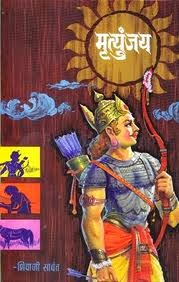Regional Railway Museum, Mysore
In Mysore lies a modestly planned railway museum located opposite the Central Food Technical Research Institute on the busy Krishnaraja Sagara Road. The cheap tickets that enable access to the museum are sold from the window of a former vacuum braked railway compartment, offering a fascinating glimpse into a bygone era. Presenting an interesting slice of history that spans across 160 years, the railway museum should be a must visit if you wish to familiarise yourself with one of the finest modes for national integration: Indian Railways.
Set up under the supervision of the Indian Railways, the museum was inaugurated by Srikantadatta Narasimharaja Wodeyar, the last descendant of Mysore's Wodeyar dynasty in June 1979. With an indoor and outdoor section, the museum has ancient steam locomotives, condemned metre gauge diesel engines, carriages, wagons, telecommunication equipment and several other paraphernalia that have in some way or the other influenced railway operations. The collection at the museum also includes photographs and a series of highly artistic paintings that depict the growth of the railways and changes in the signalling patterns since inception.
The highlight of the museum is undoubtedly the Sriranga Pavilion that houses two royal coaches which were part of the erstwhile Mysore Railway. The Pavilion incorporates in its construction beautifully carved wooden pillars, doors and balustrades sourced from the old Srirangapatnam railway station. While the Maharaja's Saloon is situated at the National Rail Museum in New Delhi, the Mysore museum has the Maharani Saloon. The Maharani Saloon consists of a bedroom, bathing facilities, luggage room, a kitchen, a dining car unit and a separate room for servants. The saloon, which was built in a workshop of the Mysore Railway in 1899 at a total cost of Rs. 29,508 can be adjusted to both Broad Gauge and Metre Gauge. It is now placed in a platform that has brass railings.
The other feature is the Chamundi Gallery, where a number of photographs both in black and white and colour in addition to paintings have been displayed. It includes antique items such as the telephone made in 1930 that was used by the Maharaja of Mysore, Mysore State Railway's clock that was commissioned in 1881 and made in New York. It also has a model of the Venduruthy Bridge in Cochin that linked Ernakulam to Cochin Harbour Terminus, a model of the long bridge between Hassan and Mangalore and a working model of the steam engine.
The star attraction of the museum is a battery operated mini train that gives a short ride around the museum. Though the museum is not huge like the one in Delhi, it is still an interesting place to be in and explore how the railways covers almost the length and breadth of India and connecting India to Indians like no one else does.
 |
| Metre Gauge Diesel Engine from Krishnarajapuram |
 |
| The Maharani Saloon, Mysore Railway |
 |
| A Third Class Railway Vacuum Braked Coach |
 |
| The Mini Train of Mysore |
The star attraction of the museum is a battery operated mini train that gives a short ride around the museum. Though the museum is not huge like the one in Delhi, it is still an interesting place to be in and explore how the railways covers almost the length and breadth of India and connecting India to Indians like no one else does.



Comments